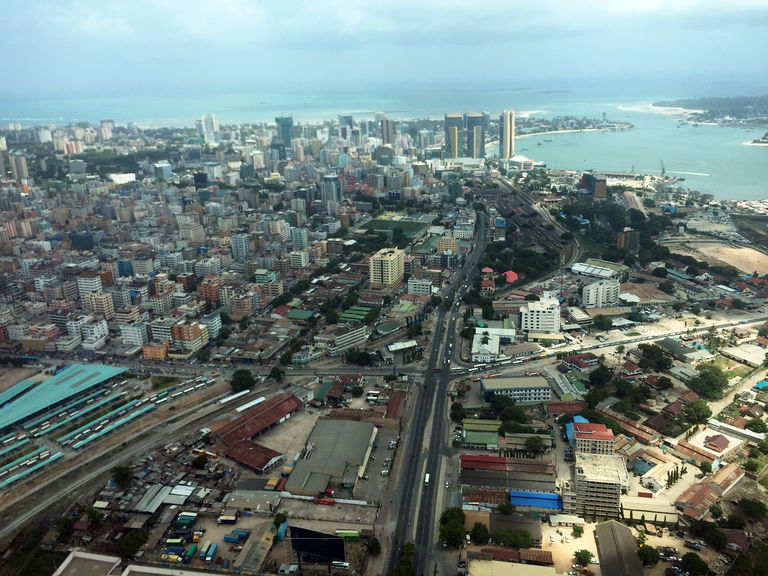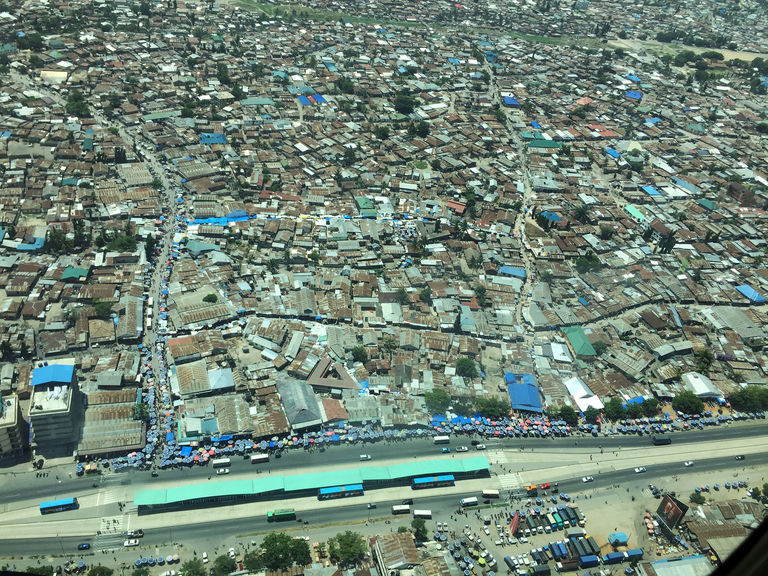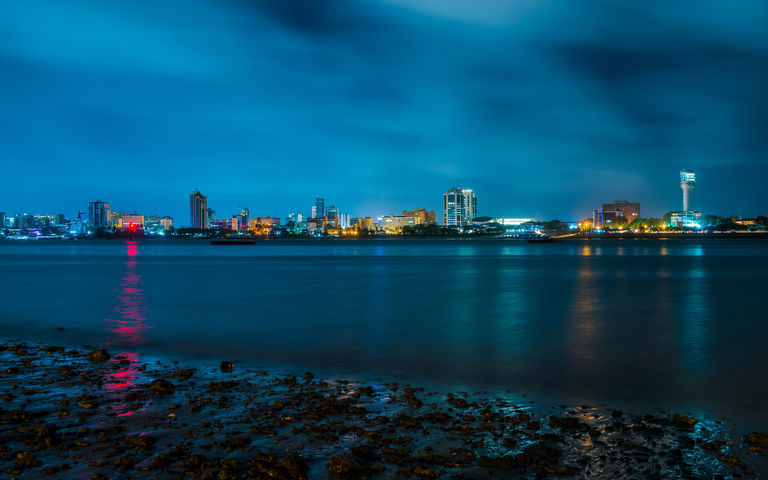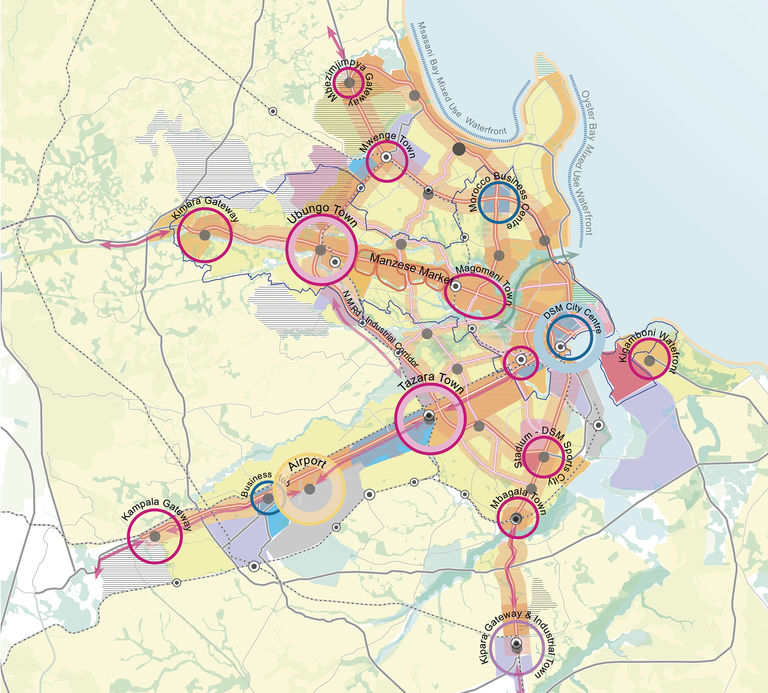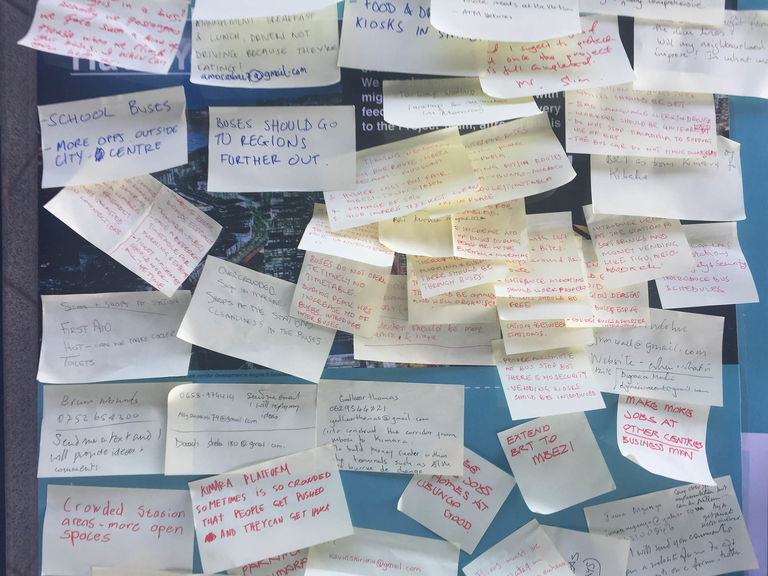A critical aspect of this project stakeholder, community and end-user engagement. Empowering the community, engaging the private sector and actively involving institutional agencies is an essential ingredient to successful city planning. Illustrating development possibilities through a range of engagement activities ensures the project reaches a variety of audiences and offers an increased level of feedback.
Four interactive workshops have taken place, engaging with a range of technical agencies who are involved in planning and implementation of the strategies within the city of Dar es Salaam. These have run in parallel with public exhibitions and detailed community and user-group surveys designed to incorporate the views of hard-to-reach local residents, while being shared through social media such as Facebook.
In the interactive workshops, role-play helped to debate and clarify some of the key issues while benchmarking visits to London’s transport hubs showed examples of best practice. A series of focus group sessions in Dar es Salaam offered fresh insights of city life and the testing of early ideas, while the public exhibition at a key BRT terminus attracted diverse interest, dialogue and exchange.
The combination of the anecdotal inputs from the consultation process and the hard data has all been crucial in informing the direction of the project while also raising the profile of the project. One of the major findings was that nearly 95% of all consulted participants said their life has changed for the better because of the BRT project with less congestion, significantly better connectivity and on-going changes in the range of uses and opportunities found along the corridor.
Africa has the youngest population in the world and this is a project for their future, a project that creates a better environment to live in and cleaner air to breathe, a project that means that children will not have to get up at 5am for a three-hour journey to school and will create the jobs they need when they reach adulthood.
The investment in the BRT is transforming Dar es Salaam and this project will ensure that every potential benefit is extracted from the initiative with the results already clear to see. It is no surprise that Dar es Salaam is winning sustainable transport awards and will become one of Africa’s best practice case studies.
*This article first appeared in Plan Magazine
